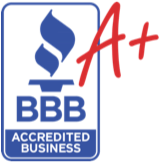CAN HACKING BE ETHICAL?
Written By: Kym Pasqualini, Feature Crime Writer for Lauth Investigations The word “hacking” almost always has negative connotations. It seems the mention of Chinese hacking, Russian hacking, or DNC hacking receives constant mention in our 24-hour news cycle. Ethical hacking is also referred to as penetration testing, intrusion testing and red teaming, coined by the […]
MOLES IN THE WORKPLACE
Written By: Kym Pasqualini, Feature Crime Writer for Lauth Investigations When we think of a spy, given the national news cycle, it may conjure up thoughts of Russians or the Chinese who have been long known for hacking and espionage. However, even more common, but much less talked about, is the business mole, and almost […]
TITLE IX INVESTIGATIONS AND SEXUAL MISCONDUCT
By: Kym Pasqualini, Feature Writer for Lauth Investigations Scandals can arise anywhere, especially in the workplace, and schools are especially vulnerable. Allegations of sexual misconduct, assault and other accusations violating workplace compliance and law, have severe civil and criminal liability. We have all heard about sports-related and college scandals, and the newly and highly publicized […]
Insider Intellectual Property Theft
Spies, Espionage, and Intellectual Property Theft Government and military entities are not the only ones spying and conducting espionage investigations to protect our national security. More and more corporations and even small businesses are now hiring expert private investigators to conduct espionage investigations and counter-surveillance to protect “trade secrets” and other classified information. Cases of […]
Business Intelligence can protect the success of your company

Whether you are entering a merger, considering an investment, or assessing a competitor’s advantage, due diligence is a necessary factor to ensure a successful outcome. Business leaders know the importance of growth but every opportunity presented holds the potential for success or failure. Business intelligence consists of collecting and organizing large amounts of data that […]
The Diversity of a Private Investigator’s Work: Stories From Around the Web
Private investigators do a variety of work. They track down missing people and recover lost assets. They keep an eye on spouses when one partner is worried about infidelity or in the process of divorce. Private investigators look into business assets during a merger and vet CEOs to make sure there are not hidden secrets […]
How Social Media Can Get People Fired
Jack E. Sandline, an Indiana Senator and owner of private investigation firm Jack Sandline and Associates, shared a post on Facebook mocking the women who participated in the post inauguration Women’s March as being fat and unmotivated. Sandlin shared a picture of the march which read: “In one day, Trump got more fat women out […]
When Hiring a CEO Goes Wrong
When Hiring a CEO Goes Wrong Hiring a CEO is a long and arduous process. Companies can’t afford to waste time and money on the wrong candidates. It’s bad enough when someone gets a CEO position and isn’t good at their job. It’s even worse when they have to resign in embarrassment. More frequently than […]
6 Ways That an Attorney Can Benefit From LII’s Services
1. We Locate People The individual could be a witness, heir, a missing child, or a criminal. Maybe the individual is a former disgruntled employee who could whistle-blow about corporate misconduct or fraud. You might needing locate a subject in possession of the proverbial “smoking gun”—as in the case of stolen assets. Whether it’s an […]
Workplace Fraud: The Three Types of Employees
There are a few generally accepted types of employees when it comes to workplace fraud and embezzlement. Social science has done a great deal of research on who commits workplace fraud and why they decide to offend. The three most common types of employee, when it comes to likelihood of committing fraud, are: honest employees, […]